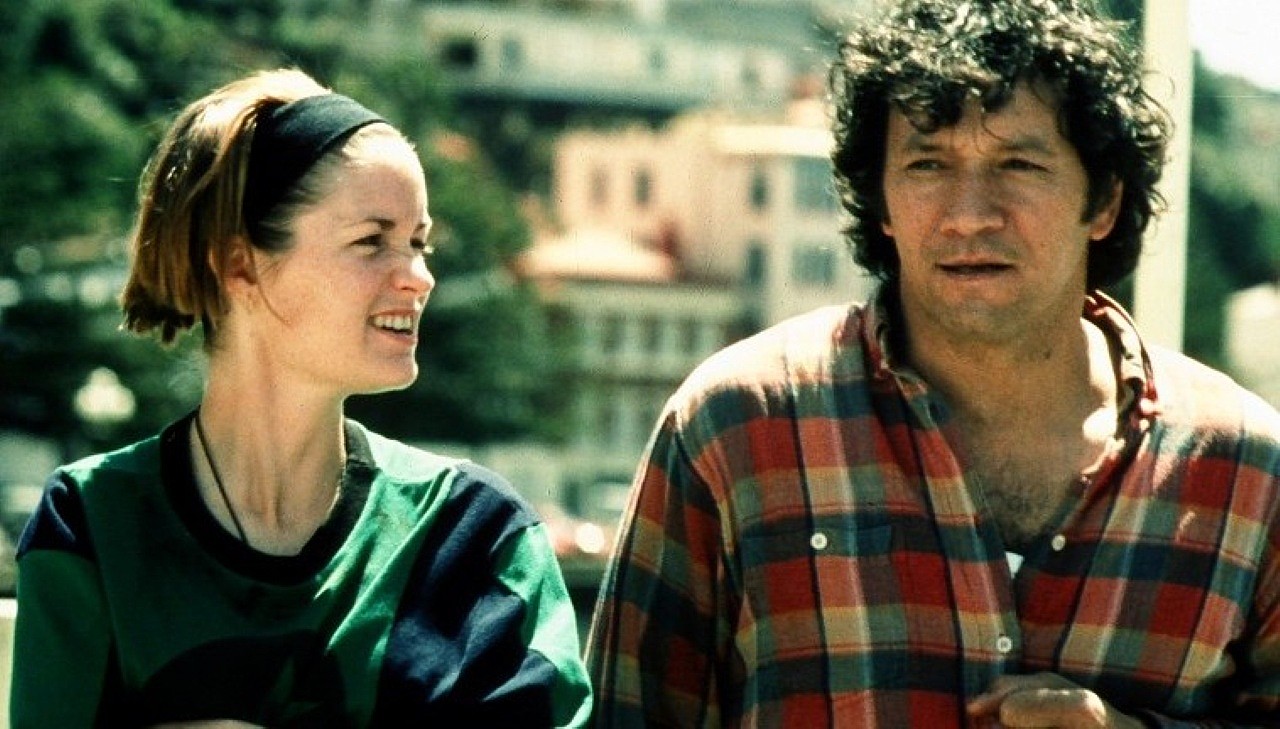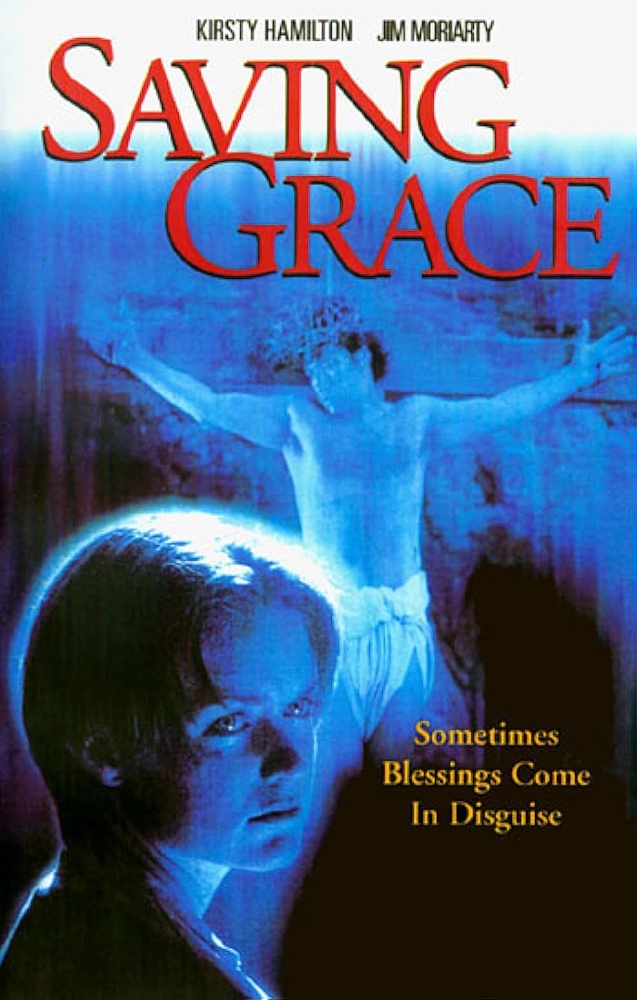Crew
Director – Costa Botes, Screenplay/Based on the Play by Duncan Sarkies, Producer – Larry Parr, Photography – Sean O’Donnell, Music – David Donaldson, Steve Roche & Janet Roddick, Digital Effects/Prosthetics – WETA (Digital Effects Supervisor – Wayne Stables, Prosthetics Supervisors – Michael Asquith & Richard Taylor), Makeup – Erin Kelly, Art Direction – Chris Elliott & Rob Otterside. Production Company – Kahukura Productions/New Zealand Film Commission.
Cast
Kirsty Hamilton (Grace Cuthbertson), Jim Moriarty (Gerald Hutchinson)
Plot
Grace Cuthberston, an unemployed and homeless teenager, meets the mysterious Gerald Hutchinson at a Wellington welfare office. He keeps following her and she cautiously accepts an invitation to come and stay at his place. The two become friends and eventually lovers. Gerald then makes the claim that he is Jesus Christ. Grace has difficulty deciding whether Gerald is simply crazy or whether his claim and apparent manifestation of miracles are genuine.
Costa Botes was known to many New Zealanders during ther 1990s as the film critic at Wellington’s morning newspaper The Dominion. Botes made his directorial debut as co-director (with Peter Jackson) of Forgotten Silver (1995), an hilarious mockumentary that claimed to uncover the fact that a New Zealand filmmaker had made all the modern film discoveries on his own before Hollywood did, which had half the nation swallowing its story when it premiered on tv. Botes later directed a series of making of documentaries for each of Jackson’s Lord of the Rings trilogy.
Saving Grace was Costa Botes’s first solo feature film. Here Botes adapts Duncan Sarkies’ two-person play, which premiered in 1994. Behind the play and film lurks the intriguing question “What would happen if Jesus Christ returned today?” Unfortunately it is a question that the film readily lacks an answer for. Instead, it heads off into a drama about belief and doubt. Certainly, Saving Grace is not a poor film. Botes does a fine job of expanding the two-person play out beyond the confines of the stage while still retaining it as a drama that uses only two actors. It is well edited and very nicely photographed, particularly during the end scenes. The two actors, Kirsty Hamilton and Jim Moriarty, both work off one another well and give good performances.
It is just that when it comes to issues of theology, Saving Grace seems stuck not much above Sunday School level. Every time Jim Moriarty launches into talking about being Jesus or taking Grace to meet his Father and so forth you feel like having to stifle giggles at the silliness of it – his opening line of dialogue is a flat deadpan “The meek shall inherit the Earth”, which makes you wonder whether you are meant to take it seriously or laugh. Both Costa Botes and Duncan Sarkies are admitted atheists (something that shouldn’t necessarily have been a problem for the film) but their grand mistake is to try and make a film about Jesus Christ with only a vague idea of what Christianity is about.

Jesus of The Bible appears as someone with a very certain mission – he had charisma, he was a rabble-rouser, someone who challenged authority and cut through hypocrisy; whereas The Christ in the film is infected with a case of postmodern angst and seems to have as many clues as to what he is on about as anyone else does. This Jesus does miracles, walks on water, raises the dead (and a new one that isn’t in The Bible – he tosses coins so they land on their edge) and so on but they only seem to be magic tricks that come without any sense of purpose. Even though this Christ says he doesn’t do tricks, they seem to be the only things he has up his sleeve – there should be more to a film about Jesus Christ than ‘Portrait of Jesus as Amateur Magician’. Similarly, the Christ in the film is nailed to a cross but again it seems to happen because that is what is meant to happen to Jesus. The script seems to lack any greater understanding of the symbolic meaning of what crucifixion represents for Christians – about redeeming the world through sacrifice and so on.
The film seems to miss its dramatic cues. In the most vivid scene during a screaming match over Gerald’s claims, Grace slashes her wrists and Gerald (the Christ character) heals her but the scene tapers off. It should have been a fundamental character breakthrough for Grace but there is no accompanying sense of dramatic realisation. A far more worthwhile script would have then had Gerald turn to her and say something like “You see, you do believe. You must have believed to know that I would heal you.” There are occasional moments when the film interpolates the idea of a Christ for modern times with amusement – Grace opening cupboards and the fridge to find them filled with loaves and fishes; Christ trying to spread his message on radio talkback and by setting up an website.
Admittedly, Saving Grace vies (with stumbling uncertainty) between asking us to believe that Gerald is Christ or whether this is all inside Grace’s imagination – and there is a reasonable ending that leaves the issue hanging ambiguously for the audience to decide. For all that it matters to the film that Gerald is Jesus Christ though, it could be that we are being asked to believe that he is an alien, a pixie or a magician. A story about Christianity should be a tale about salvation and moral redemption but instead all we have is a film that sits on a fence and plays the old is it real or is it in her mind game. A far better ambiguous messiah film was Man Facing Southeast (1986), a film that juggled all of these themes with considerable intelligence and flair.


